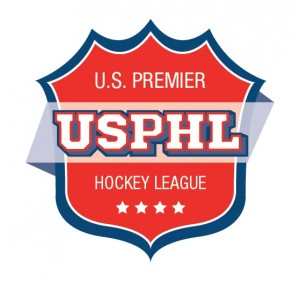State’s pro presence stronger than ever

Doug Wilson has seen a lot since he first arrived in California.
Winner of the Norris Trophy as the NHL’s top defenseman with the Chicago Blackhawks in 1982, Wilson was traded from the Windy City to the San Jose Sharks in 1991 to provide leadership and stability on the blue line for the expansion team as the first captain in franchise history.
Now entering his 13th year as the general manager and executive vice president of the Sharks, Wilson has seen the seismic shift in hockey’s popularity in the state from one of the best seats in the house.
“It was such an exciting time out here during that first year,” said Wilson. “Now, when you look at the number of facilities that have been built, the commitment to the youth programs, it’s (impressive). Anyone who wants to play the game here or anywhere in California, there’s a place for them.
“We really try to make it available to everybody, and that goes back to the commitment to grow this game – not just from our organization, but from the (Los Angeles) Kings and (Anaheim) Ducks organizations as well.”
The addition of five new American Hockey League (AHL) franchises is a testament to game’s surging popularity. Affiliates of San Jose, Anaheim, Los Angeles, the Edmonton Oilers and Calgary Flames will take the ice this season in San Jose, San Diego, Ontario, Bakersfield, and Stockton respectively – something that would have been difficult to imagine in 1991 when USA Hockey had only 4,830 players registered in the entire state. Compare that number to now, where in 2014-15 USA Hockey had California as the seventh-largest state in terms of total players with 26,383.
“California is growing by leaps and bounds in terms of participation, and adding the AHL teams is only going to help,” said Darren Abbott, president of the Ontario Reign. “The Kings just launched their high school league and we’re getting involved with building more arenas, and the arrival of these teams is going to continue to push the growth.”
Steve Laing, like Wilson, has been involved in the state’s hockey scene since the early 1990s, both as president of the California Amateur Hockey Association and as an off-ice official for the Ducks. He acknowledges that while hockey continues to rise in popularity, there are challenges to sustaining the growth.
“It’s been phenomenal to see how far the game has come in California, but it eventually comes to a point where you can only do so much,” said Laing. “In order to continue this growth that we’re seeing, we need the ability to build additional rinks. Ice time is a huge challenge here, because rinks want to see time allotted for public skating and figure skating, too.
“The cost to build rinks is a negative impact, but with the AHL and NHL getting together, that’ll help grow the game and grow the programs even more.”
For Abbott, having more options to watch professional hockey around the state has huge benefits across the board.
“Kids and adults alike are going to continue to have places to go watch high-level hockey,” said Abbott. “Ontario is a market that was already here, but a team like San Diego hasn’t had (professional) hockey in eight years or so. Now kids in San Diego can go see great hockey for a reasonable price, and I think that’s a really big deal for the sport.”
Former NHL defenseman Kyle McLaren agrees. Traded from the Boston Bruins to San Jose in 2002, McLaren – who spent 12 seasons in The Show – patrolled the Sharks’ blue line for five seasons and says that how the sport is perceived has changed immeasurably from the time he arrived.
“Hockey in California is still pretty young,” said McLaren, now the head coach of the San Jose Jr. Sharks’ 18U AAA team. “It doesn’t have the fan base that an Original 6 team would have, just because teams out here haven’t been around that long.
“But even from when I came out here in 2002 until now, I see the growth at the rinks. I see the enthusiasm in the players and the parents and the fans, and with the arrival of these five new AHL teams, it’s going to grow even more.”
While the boom had already started in 2002, it was still a little different than what McLaren experienced in Boston.
“Every day when I went to the practice rink in Boston, there were at least 60 people looking for autographs,” said McLaren. “It didn’t matter if (the temperature outside) was 20-below-zero. And we had so many people in the locker room – reporters from every major newspaper and probably every small town in the state, they were all in there.
“I think when I first got out here there was maybe one or two locker room reporters – that’s it. But it’s growing so fast, you see people take an interest in it and become fans of the game. I’ve been here 13 years now, and the change is tenfold from what I saw when I first got here.”
All four men point to the development and success of the youth programs established by the Kings, Ducks and Sharks as a major catalyst for growth across the state.
Now, you’re starting to see alumni of these programs make the jump to the NHL, with players like San Jose’s Matt Tennyson (San Jose Jr. Sharks) and the Pittsburgh Penguins’ Beau Bennett (Los Angeles Jr. Kings) playing some – if not all – of their formative minor hockey years in California.
“It was a very special moment for me when Matt Tennyson became the first Jr. Shark to score a goal in a Sharks jersey – that was a dream (original owner of the Sharks) George Gund had right from the beginning,” said Wilson.
“There are lots of kids now choosing hockey as their game of choice. Even if you don’t go to the NHL or play in college, hockey to me is something that teaches you all the skill sets you need in life, whether it’s personally, professionally or socially.
“Hockey is a special game, and it’s great to see the opportunities that have been provided to people who play this sport we all love so much.”
Increased involvement and enrollment at the minor-league level is certainly a focus for Abbott, whose Reign enter the season as the defending Calder Cup champions after capturing the 2014-15 AHL title as the Manchester Monarchs.
“If you’re the pro hockey team in a town, you have to reach out to the younger leagues and help in any way you can,” said Abbott. “Probably the easiest way to do that is to get your players out and get them involved.
“Non-traditional markets really grab on to the sport because it’s fast and it’s exciting, but I don’t think you have to change that much out here.
“Sure, in Manchester we had the advantage of New Hampshire being a hockey state and there are a lot of kids playing hockey, but there’s also a lot of kids playing hockey out here and fans are starving for more, which makes for a great market even though it’s not necessarily a traditional one.”
– John B. Spigott









